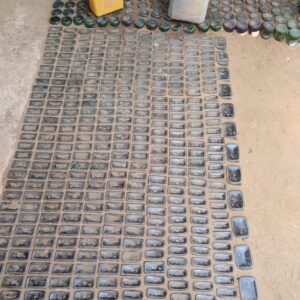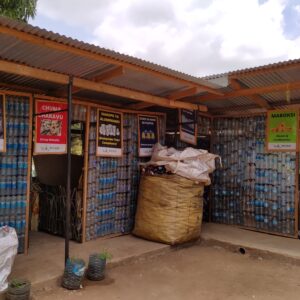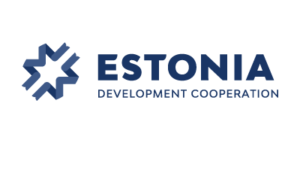Waste story from Tanzania – visiting a zero waste community
During my last week in Africa, I visited a dear friend and colleague Ana Rocha and her organization Nipe Fagio, based in Dar es Salaam, Tanzania. One of the things I got to see was a local zero waste model pilot in Bonyokwa area, Ilala Municipality. It’s a community with about 14 000 inhabitants, where a Material Recovery Facility (MRF) has been in use for 2 years now, operated by a waste cooperative.
The MRF is run by a cooperative of waste pickers and community members. In most places in the Global South waste pickers are the people working at dumpsites or on the streets, where they pick out the recyclable waste and with that provide the essential link in the recycling process. Working on a dumpsite (like the one I visited at Dandora in Nairobi) has many negative health implications among other things. Transitioning into cooperatives under zero waste systems improves the waste pickers working conditions significantly and gives them more formal recognition.

Here in Bonyokwa, they are essentially the owners of the MRF and take care of the whole organization. They collect waste from all the community households six days a week. The households sort their waste into four categories: biowaste, recyclables, domestic hazardous waste (e.g diapers, syringes, medicines) and residuals (everything else). At the MRF, the employees do further sorting of the recyclables: metals, PET-plastic (transparent and colourful), HDPE-plastic, glass, cardboard, white paper, electronics, textiles and shoes. Almost all the separated waste fractions can be sold to recyclers for being recycled as material.
Those recyclables that have a small or no market, are used creatively. Some glass bottles are used as a pavement (see theimage), paper which is too dirty for paper recycling, is mixed into compost for nutrient balancing, etc. Biowaste is both composted at the MRF and used to grow black soldier fly larvae, which are sold as chicken feed. Compost is used at a small garden next to the MRF to grow vegetables, which the community members can buy.
The employees weigh all the waste and record the data, to observe trends. Local community leaders who also came to meet me, told me that majority of the community members have gotten used to separating their waste at the source and those who haven’t still, are also starting to catch up. And there are several other communities also showing interest for this model, including government officials.
The MRF employees told me that there are still many things to be developed there, but I could see the pride and ownership in the way they speak and behave at this center. The MRF is clean and organized, contrary to the usual smelliness and yuckiness of waste you might expect.
Nipe Fagio is planning to implement the model in three other areas of Tanzania this year – one in Dar es Salaam, two in Arusha. Two more in Zanzibar are in the planning phase.
It is a nice last visit for me before returning home – seeing zero waste principles in action. Wishing them lots of luck in these plans!
By the way, if you want to know more about Nipe Fagio’s activities, read their freshly released 2021 waste and brand audits report.
Let’s Do It Foundation develops its activities in Africa with the help of Estonian Development Cooperation Funds.

« Previous post
We support Ukraine